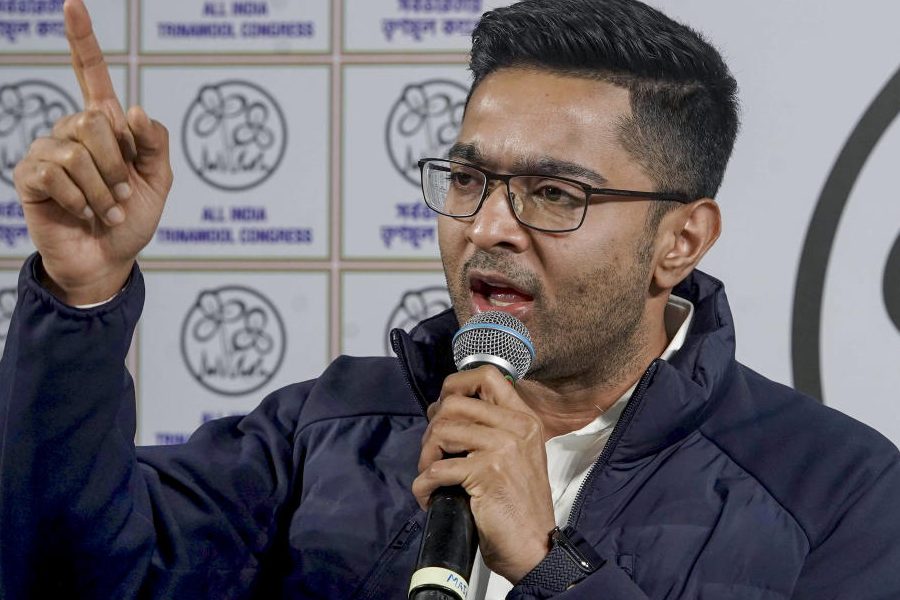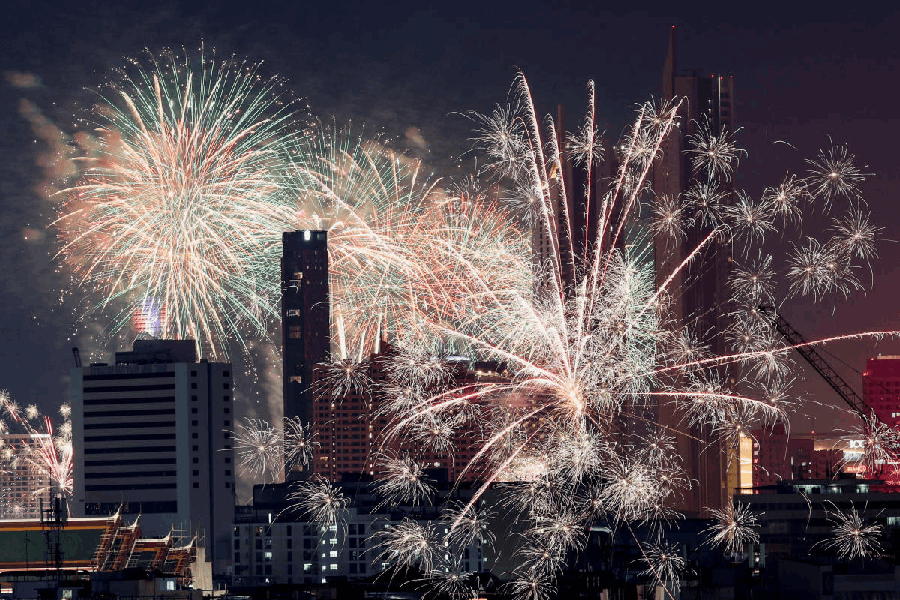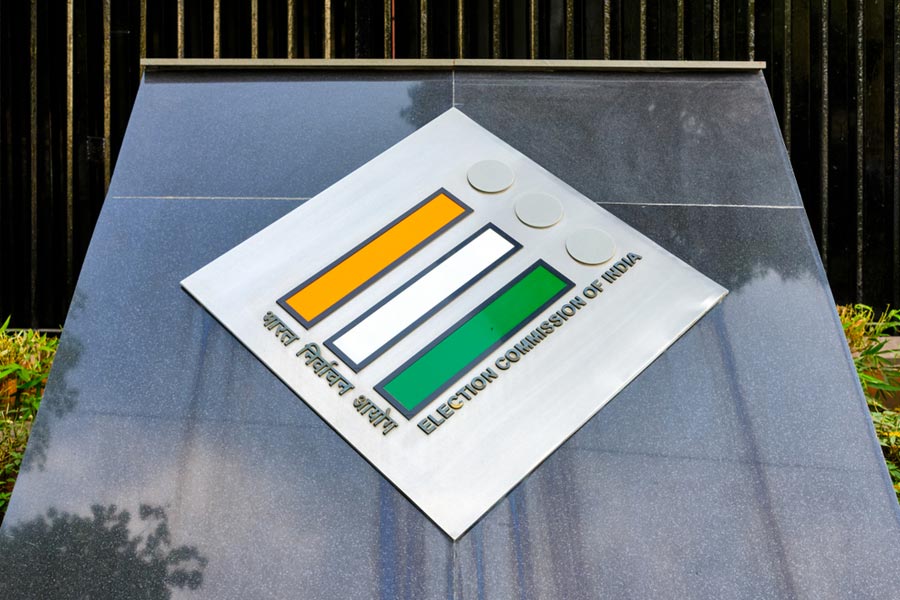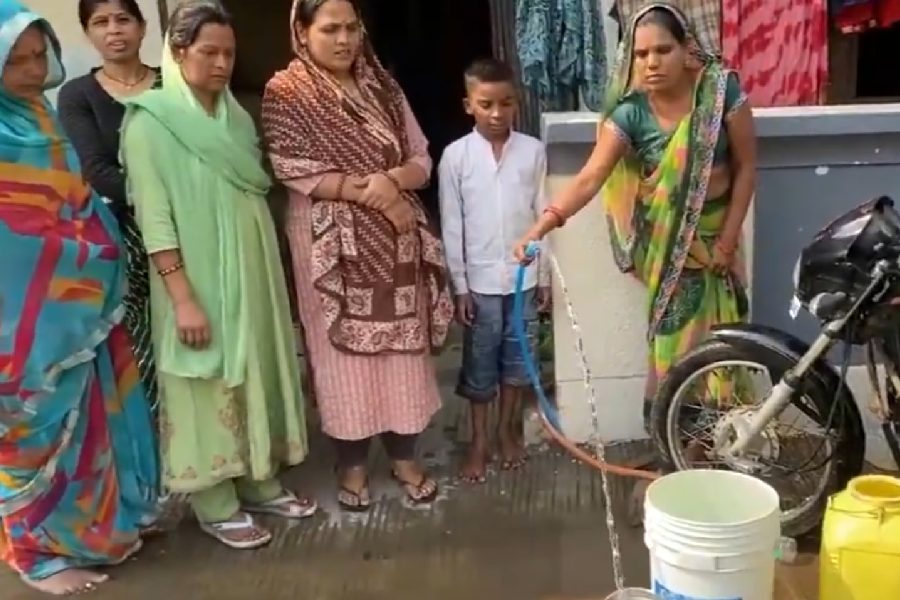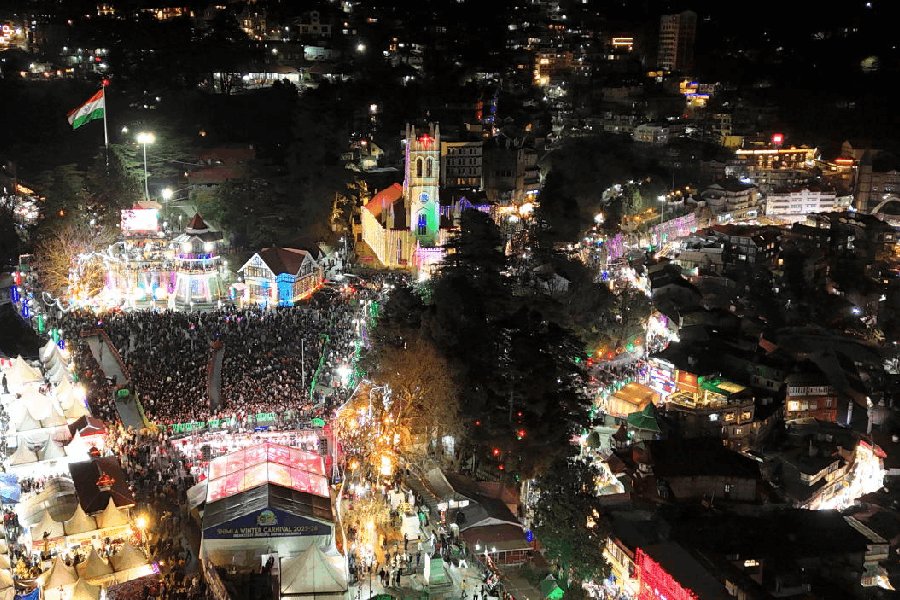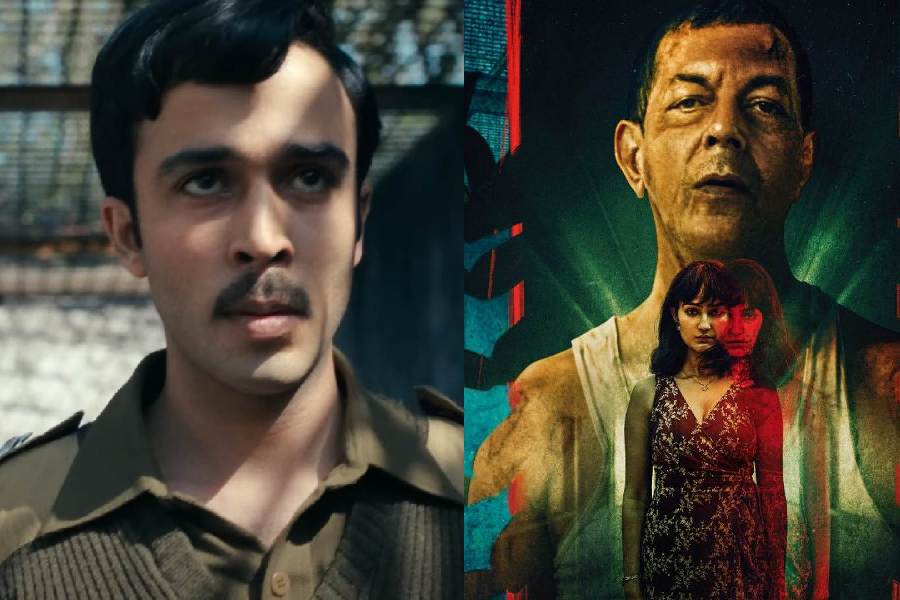 |
| Tagore Villa at Alam Bazar has been turned into BSF officers’ quarters. Picture by Sanat Kumar Sinha |
When one has only seen the sketch of a stately building, and one is suddenly standing before the mansion itself, the memory and the real thing become one.
I had seen Desmond Doig’s sketch of Tagore Villa in Alam Bazar ages ago. And here I could see the gracious building itself before me, its colonnaded verandah with its louvres, the double-winged staircase, the fountains, everything intact. Only bathroom tiles had replaced the marble and the bridges across tiny streams of water had collapsed.
There were some additions, and some elements such as the marble ornaments were missing but the sketch done in the 1960s and building as it is today were more or less the same.
It had lost its quaint charm but its starkness was no less beautiful. The only eyesore was a large green plastic awning over the terrace and clothes drying on the verandah railings of delicate, floriated cast iron.
The Hooghly flowed beside the villa, and straddled across it was Vivekananda bridge that connects Dakshineswar with Bally. The villa, close to 250 years old, is visible from the bridge itself, standing out amid the chaos of the shabby and moth-eaten neighbourhood.
It was a Sunday afternoon, and peace reigned. The original marble plaque had been gouged out of the wall. The house had been turned into the quarters for officers of the Border Security Force (BSF), and in spite of the BSF’s best efforts (plywood tables and synthetic lace) the dignity of this grande dame remained untouched.
The mahogany staircase flowed magnificently from the first floor. All the paintings, statuary and the opulent furniture had disappeared. There were no chandeliers to light up the gloom. I learnt later that there used to be an ornate lift inside, but I could not find it.
Tagore Villa stands in sprawling grounds at the point where Gopal Lal Thakur Road, a continuation of Cossipore Road, terminates.
On the left is the BSF camp with its gateway. Our ostensible reason for entering the compound was meeting the former owners belonging to the Tagore family of Pathuriaghat.
The neat road inside wended its way past fields meant for the training of BSF jawans and a small township where the jawans lived with their families.
At the end of the road was a large pond and beyond it the white vision from the past. We walked past some crumbly buildings where the BSF families lived.
Chunks of concrete had chipped off the tall water tank. The former owners live in a single-storeyed, old building now. Dogs greeted us with a volley of barks. A middle-aged woman came out to meet us. She introduced herself as Malati Chatterjee, the daughter of Purnendu Nath Tagore, the last of the family to live here. A widow, she lives there with her son Swarup.
At Pathuriaghat, Partha Nath Tagore, 59, who lives in his Darpanarayan Tagore Street residence, said the building had been acquired by Gopal Lall Tagore.
Raja Prafulla Nath Tagore, father of Purnendu, had beautified and extended it. Purnendu was Partha’s uncle. It used to be a getaway where family weddings were held.
“I remember being a nitbor at one wedding,” said Partha. The Tagores entertained lavishly there and the viceroy used to be among the guests. But the house used to remain vacant for the better part of the year. The Chatterjees live in debuttar property where the temple of Mohan Gopal was located.
During the Naxalite uprising, there was a possibility of the building turning into an urban guerrilla haven. In 1971 it was sold to the BSF. It was saved.


